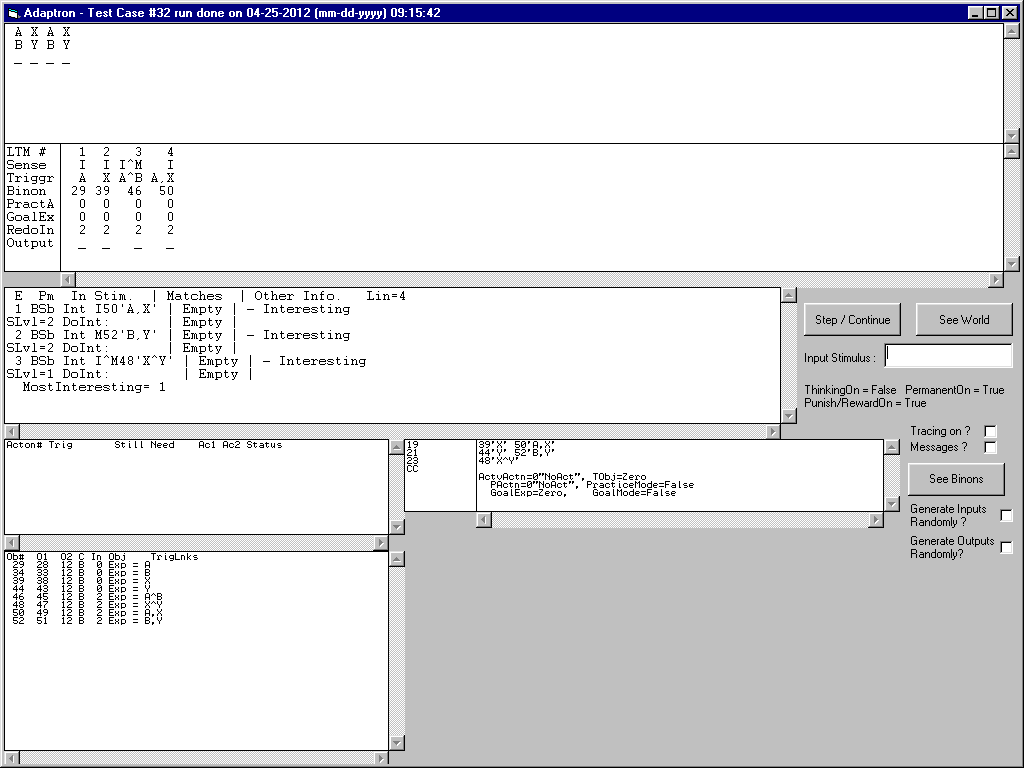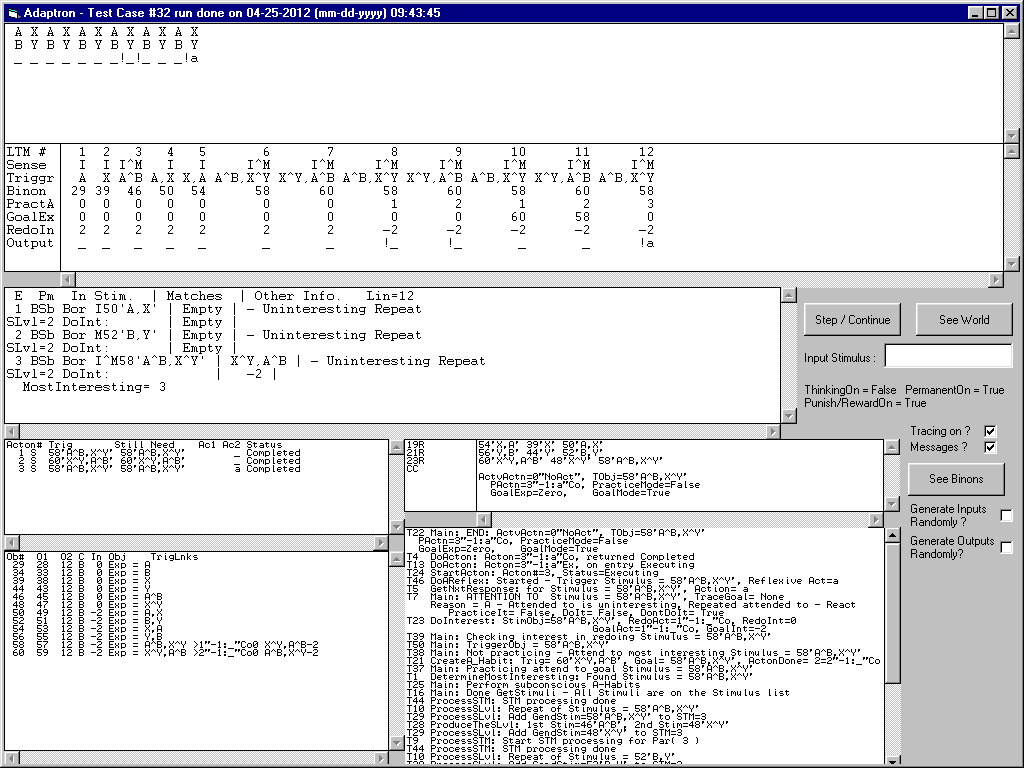2012-04-25 #1
Adaptron Test Run – 1 - Date: 25th April 2012
At this point in test case #32 I have a P-Habit combination X^Y that is interesting because both X and Y are familiar. But I also have two interesting S-Habit sequences A,X and B,Y. The current algorithm to determine what is most interesting chooses the 1st of the longest S-habits rather than the largest P-Habit combination. Is this correct? One is going to explore the most interesting things before the least interesting things. Exploration with actual responses (not orienting) will begin after all stimuli are repeats and uninteresting. So it is really reflexive exploration of the most uninteresting thing.
I have stated before that attention is attracted to the largest combination of things that have changed. Restating this says that we pay attention to the largest novel combination before the novel parts. If we pay attention to the novel parts 1st we may be paying attention down at the noisy random level. It is the big patterns to which we first pay attention. Therefore are S-Habits bigger than P-Habits? Big is not a useful criterion for this comparison since one is quantity big and the other duration big.
When continuing this test case as in the second screen dump it appears to be correct for this particular alternating stimulus pattern.


